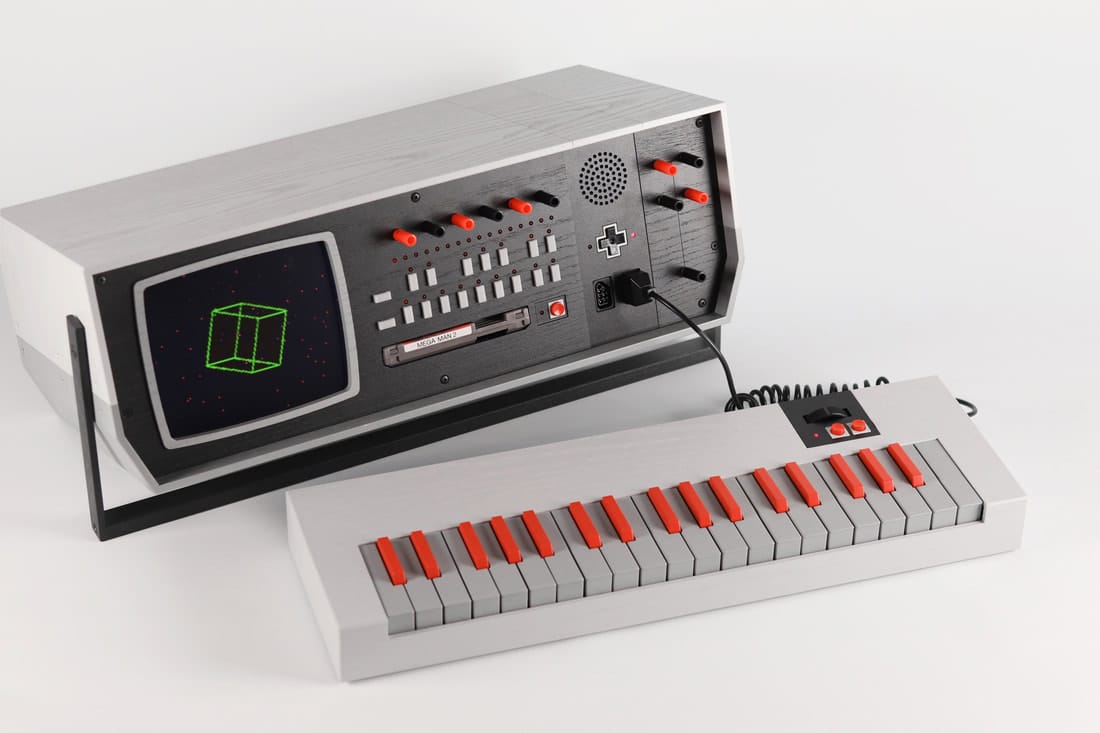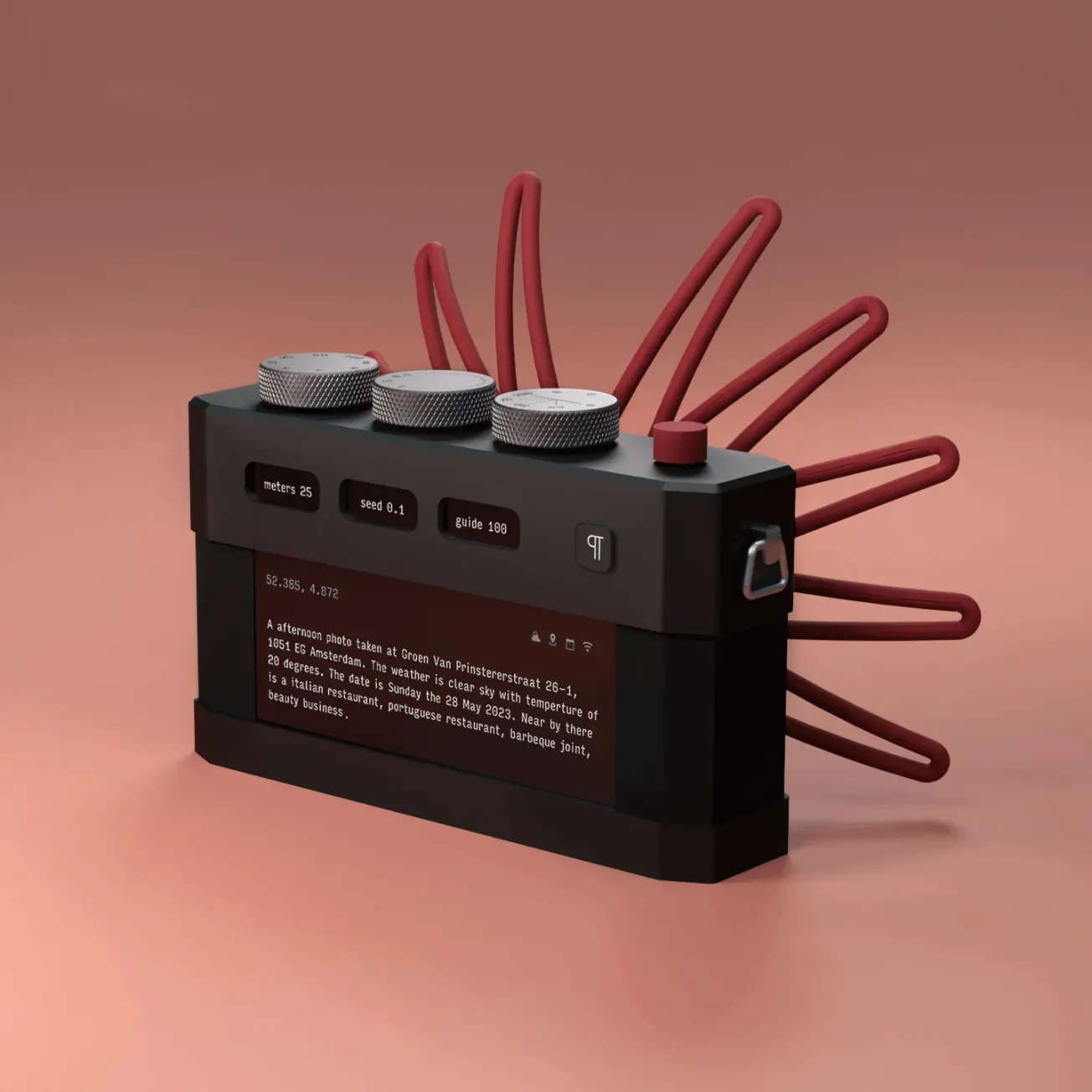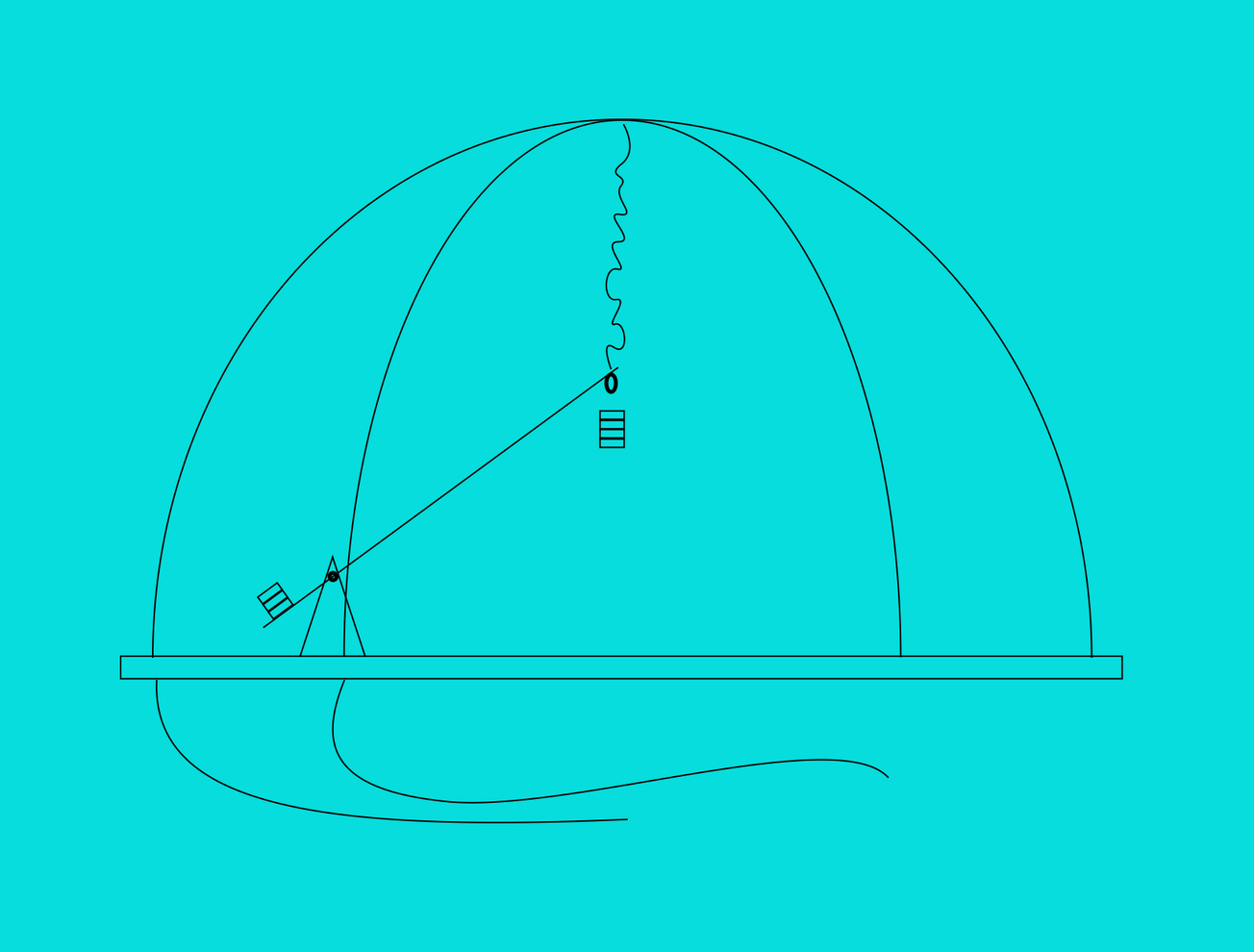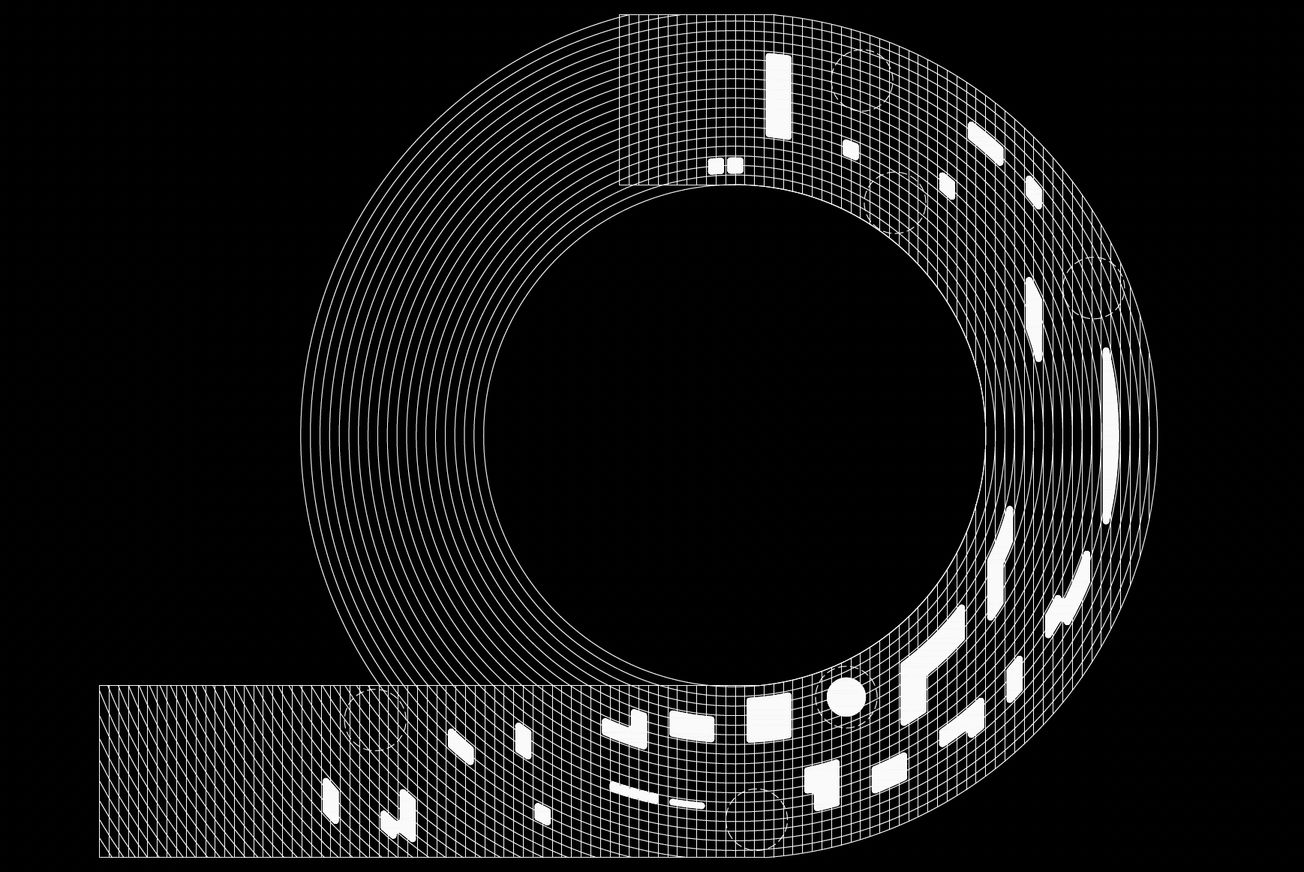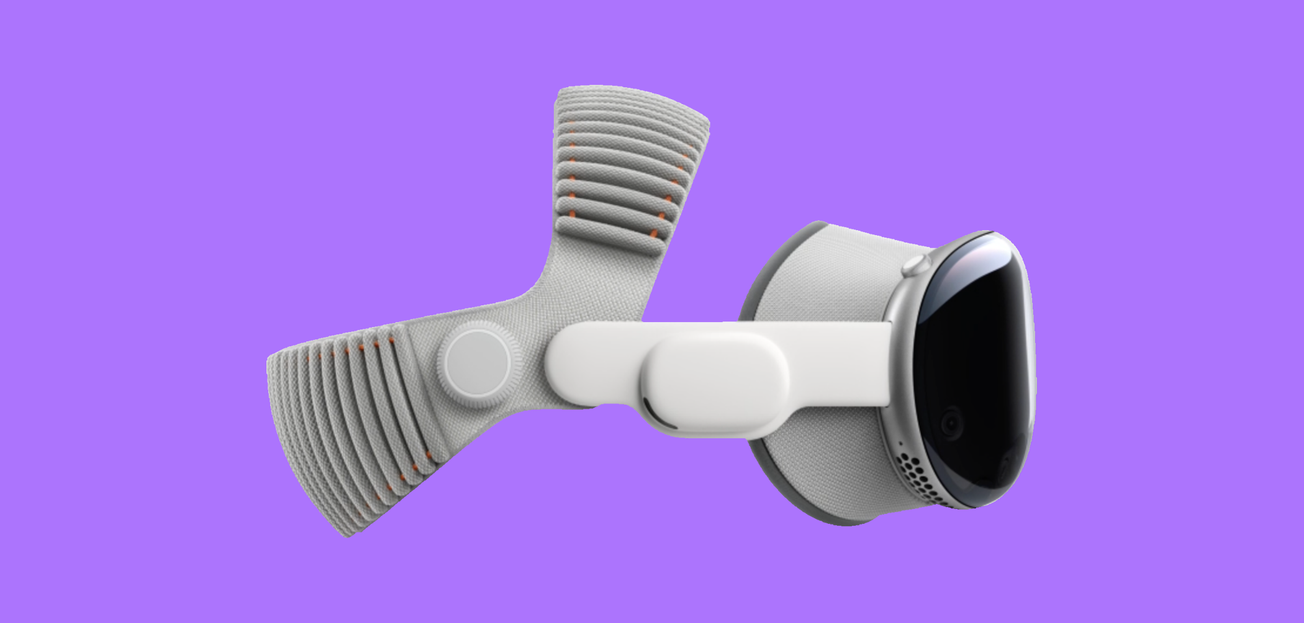In an era where technology evolves at an unprecedented pace, creatives are looking backward to move forward. Retro-futurism, a design approach that blends past visions of the future with cutting-edge innovations, has seen an interesting resurgence. From digital artists to industrial designers, a growing number of creatives are channeling the aesthetics of mid-century sci-fi, cyberpunk, and the Space Age into modern projects, merging nostalgia with speculative technology. This approach is not just a stylistic revival—it reflects cultural anxieties, optimism, and an evolving dialogue between past and future.
At its core, retro-futurism imagines how the future was once envisioned, often characterized by sleek chrome surfaces, neon-lit landscapes, curved aerodynamic forms, and analog-meets-digital interfaces. It taps into the optimism of past decades, such as the 1950s and 1980s, when space travel, robotics, and artificial intelligence were romanticized as harbingers of a utopian future. In today’s hyper uncertain world, this aesthetic can provide an escape with designers reimagining the technological promises that were never fully realized.
The cyclical nature of revisiting past aesthetics certainly plays a role in its resurgence. Just as the 1980s romanticized Art Deco’s sleek minimalism and the 2000s revisited 1970s psychedelia, many contemporary artists and designers are embracing the aesthetics of a future once imagined—updated with modern tech.
Futurism in design was driven by pervasive optimism is the universal effects of technology integrated into our daily lives. Given the current political landscape – does this sense of optimism in the power and potential of tech still hold true or will we see a far more pessimistic (or even nihilistic) perspective take shape in the resurgence of the futurism aesthetic?
Notable Designers and Their Take on Retro-Futurism
Digital artist Beeple (Mike Winkelmann) has been at the forefront of visualizing futuristic landscapes through a nostalgic lens. His neon-drenched, glitch-heavy aesthetic reflects both the sleek optimism and dystopian fears of a tech-driven future. His digital renderings often blend 80s-inspired synthwave motifs with hyper-futuristic cityscapes, making him a defining figure in modern retro-futurist digital art.
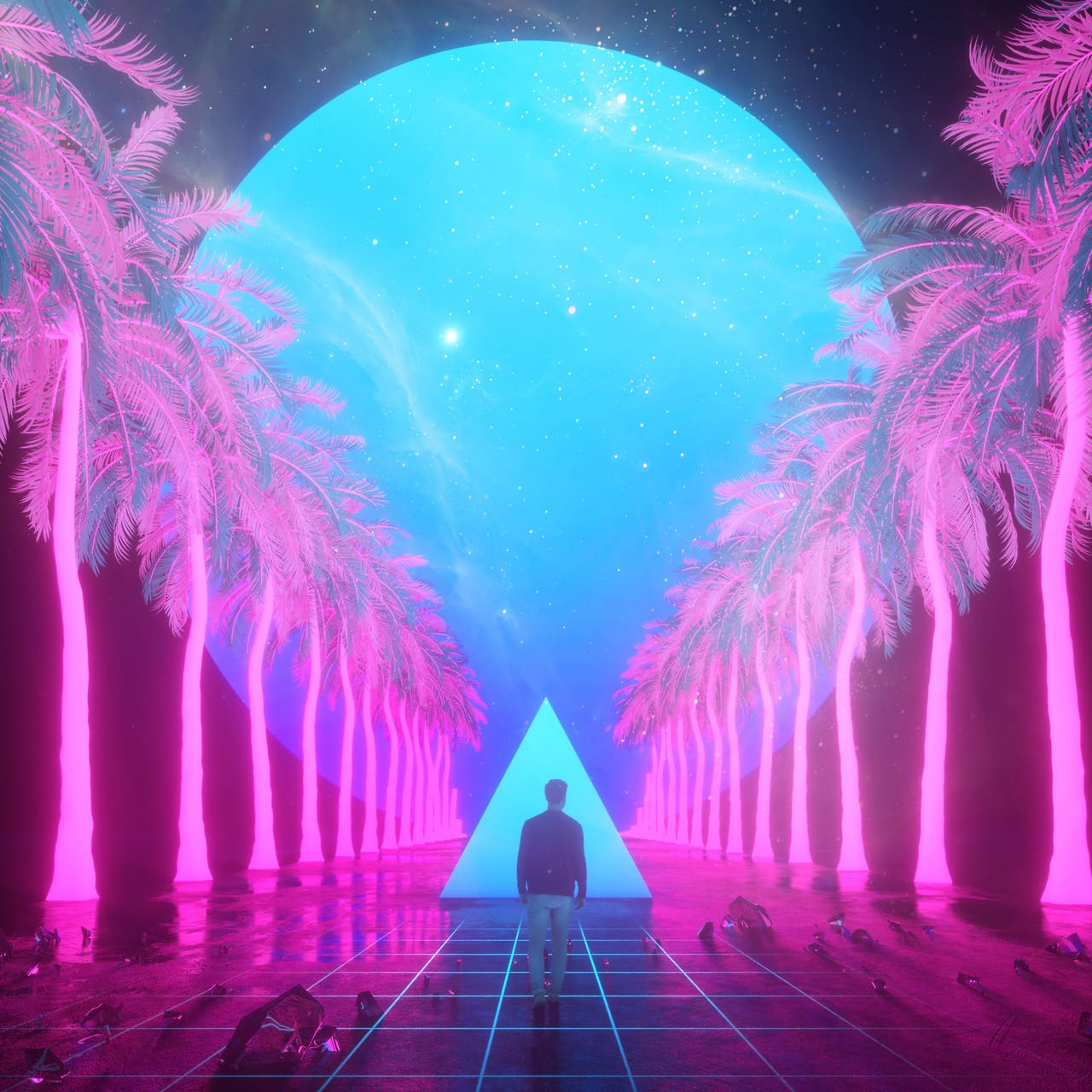
Swedish designer Love Hultén combines vintage craftsmanship with modern technology, crafting bespoke synthesizers, gaming consoles, and electronic devices that look like they belong in a 1970s sci-fi film. His creations, such as the Zette System, a custom gaming console inspired by the design of mid-century radios and televisions, seamlessly merge nostalgia with cutting-edge hardware.
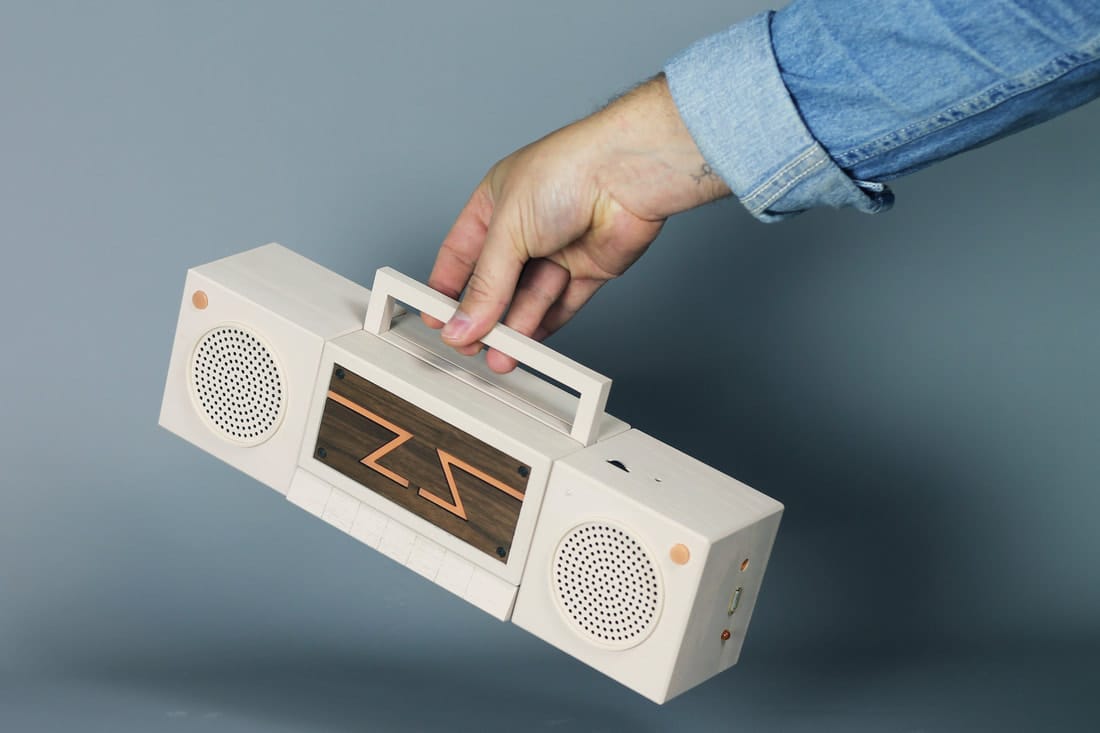
In the realm of fashion, Iris van Herpen has pioneered a style that combines futuristic materials with sculptural, almost retro-fantasy-inspired silhouettes. Her use of 3D printing and laser-cut fabrics mirrors the aesthetic of science-fictional couture, bringing a tactile sense of the future envisioned by past generations.
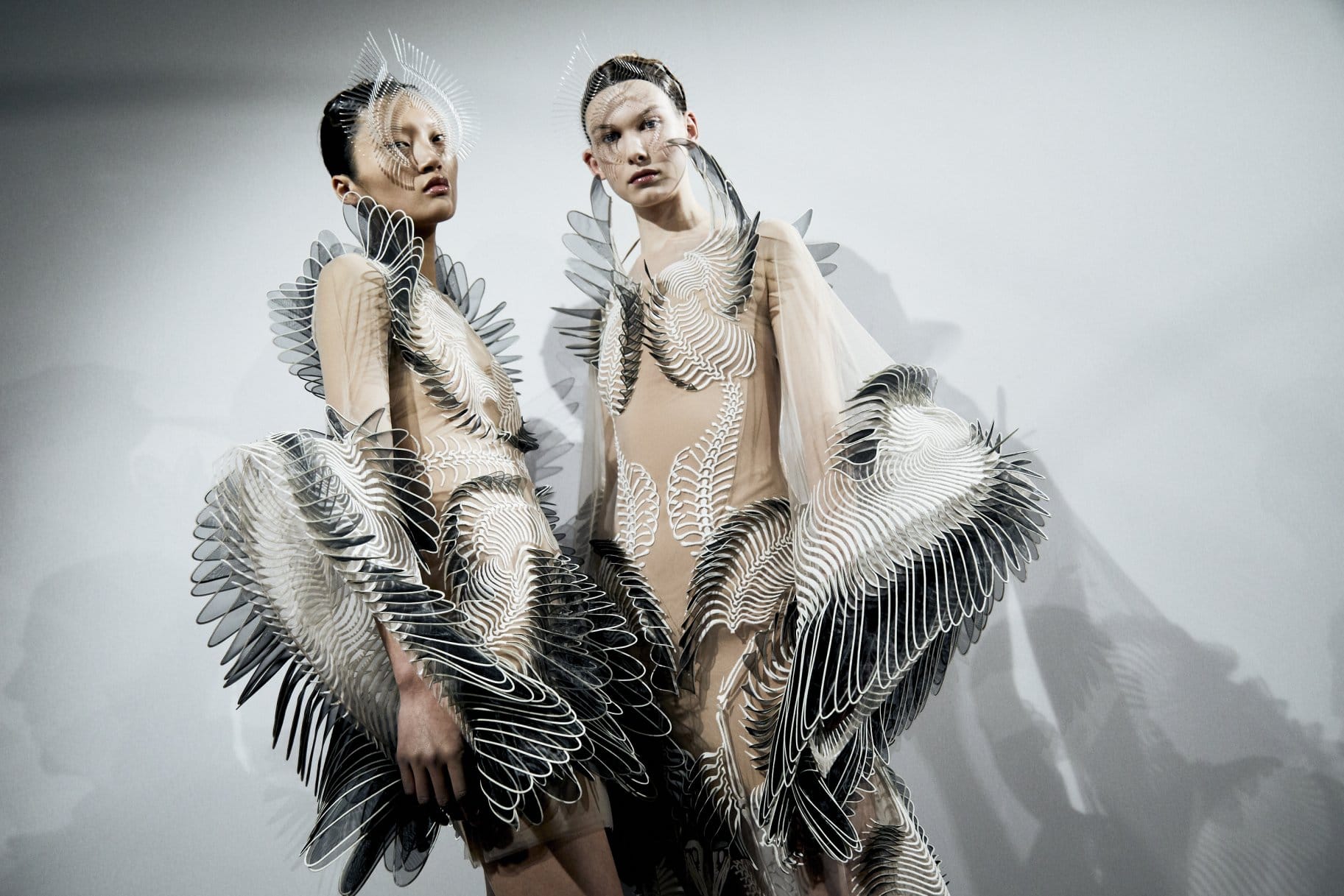
The late Zaha Hadid and her firm have been instrumental in realizing architecture that aligns with retro-futuristic ideals. The smooth curves, organic forms, and dynamic fluidity of her structures evoke the Space Age aesthetics of the 1960s, but executed with cutting-edge digital fabrication techniques.
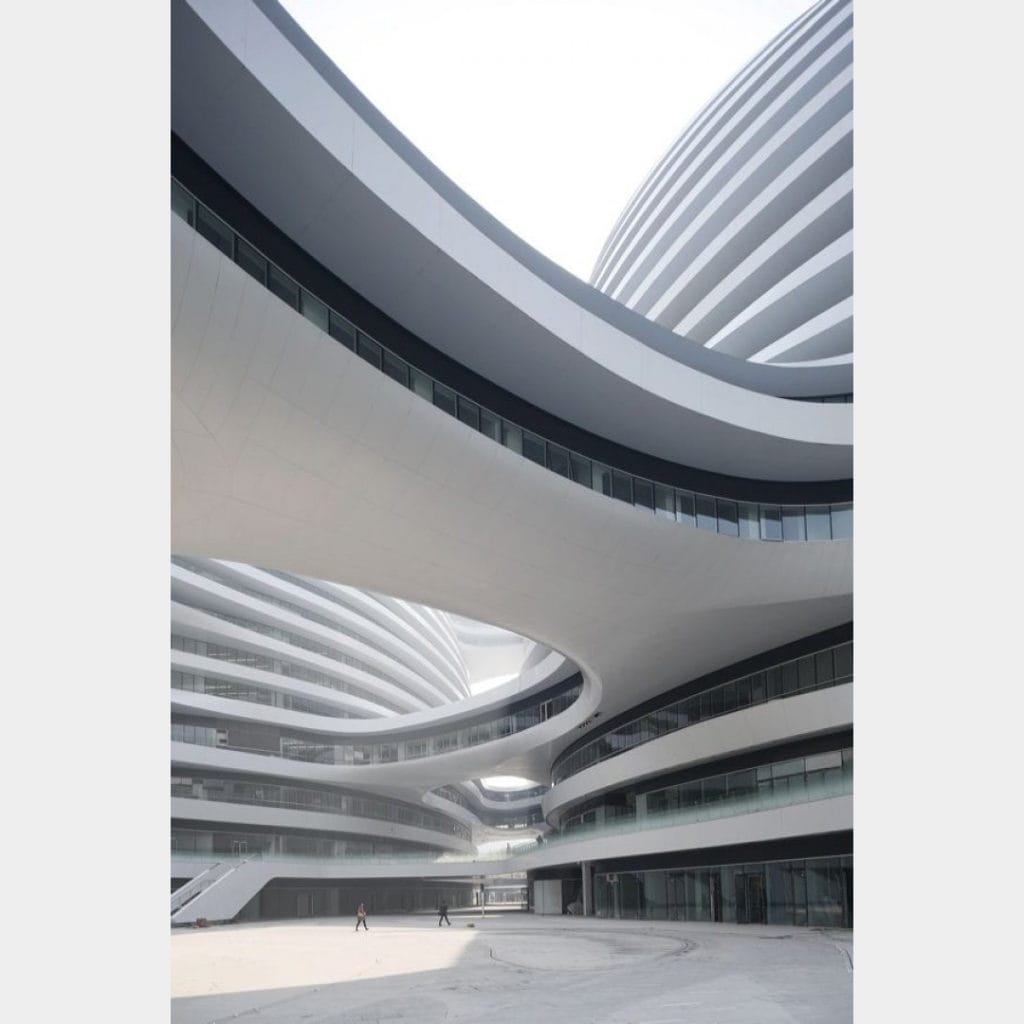
Influence of Retro-Futurism in Contemporary Media
Films, television, and video games have also played a crucial role in the renewed interest in retro-futuristic aesthetics. Works like Blade Runner 2049, Stranger Things, and Cyberpunk 2077 pay homage to 80s-era futuristic visions while incorporating hyper-realistic CGI and virtual production techniques. The neon-lit streets, flying cars, and monolithic skyscrapers are direct descendants of the retro-futurist ideals pioneered in classic sci-fi films such as Metropolis (1927) and Tron (1982).
Similarly, contemporary graphic designers are borrowing from retro-futuristic motifs in branding, UI/UX design, and album covers. A resurgence of pixel art, vaporwave aesthetics, and bold geometric compositions inspired by 80s airbrush futurism are becoming increasingly popular in mainstream design.
Deeper Cultural Significance
The resurgence of retro-futurism is more than just an aesthetic choice—it reflects society’s evolving relationship with technology. In the mid-20th century, technological advancements were seen as beacons of hope and progress. Which brings me back to my earlier question. As digital surveillance, AI, and climate change reshape our world, there’s a simultaneous nostalgia for a time when the future seemed more optimistic. Retro-futurism acts as a bridge between these contrasting emotions, allowing creatives to explore the potential and pitfalls of emerging technologies while grounding their visions in familiar, comforting aesthetics.
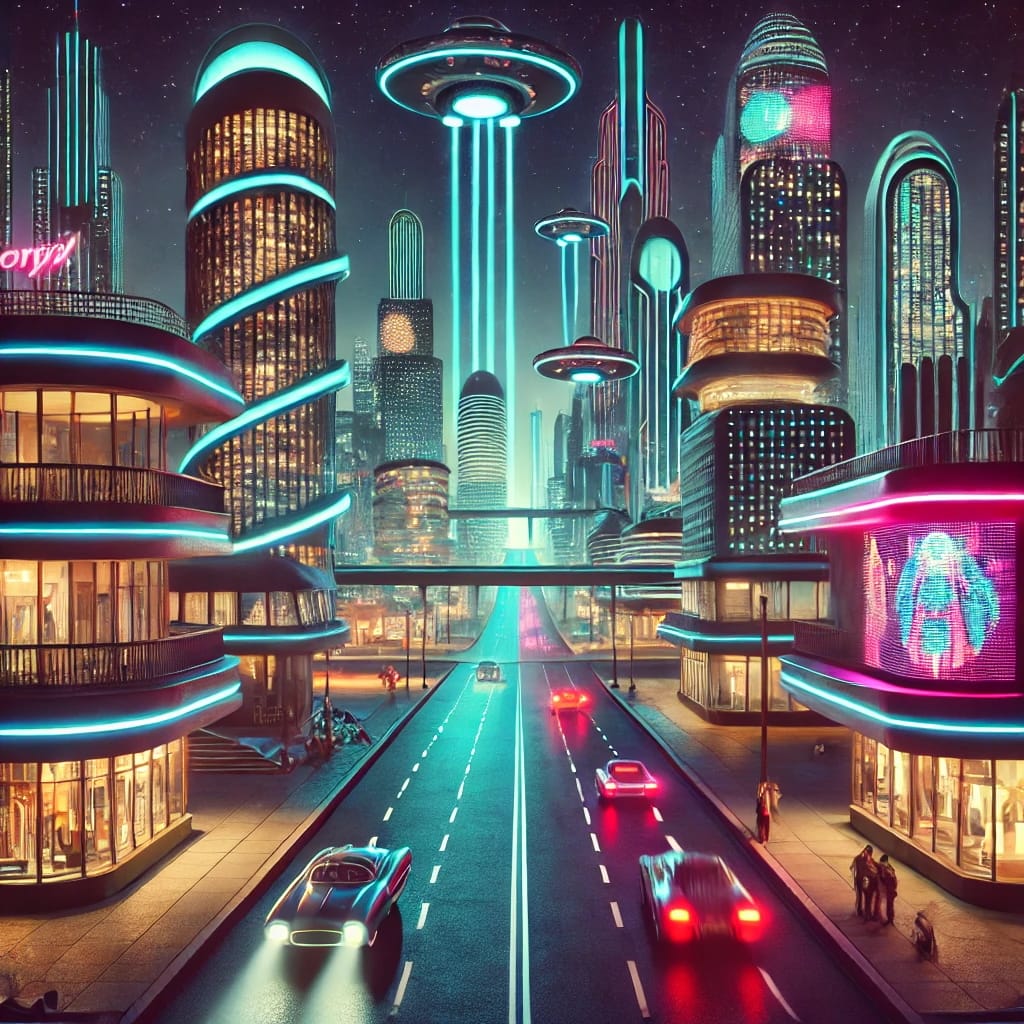
Additionally, the renewed interest in analog-inspired design—such as skeuomorphic UI elements, tactile mechanical keyboards, and modular synthesizers—suggests a desire for more human-centric, tangible interactions with technology. This reflects a broader movement in design toward integrating digital advancements with physical nostalgia.
So, where Retro-Futurism is Headed Next?
As augmented reality (AR), virtual reality (VR), and AI-driven art continue to evolve, will the retro-futurist aesthetic become even more immersive? For example, imagine fully interactive environments where users can navigate a Metropolis-esque cityscape or inhabit an 80s-style neon cyber-world powered by real-time AI rendering. Will designers continue to experiment with AI-generated architecture inspired by vintage sci-fi? OR, will the current political climate begin to impact the aesthetic? Rather than an nostalgic indulgence built on technological optimism, perhaps retro-futurism will become a sign of caution.

